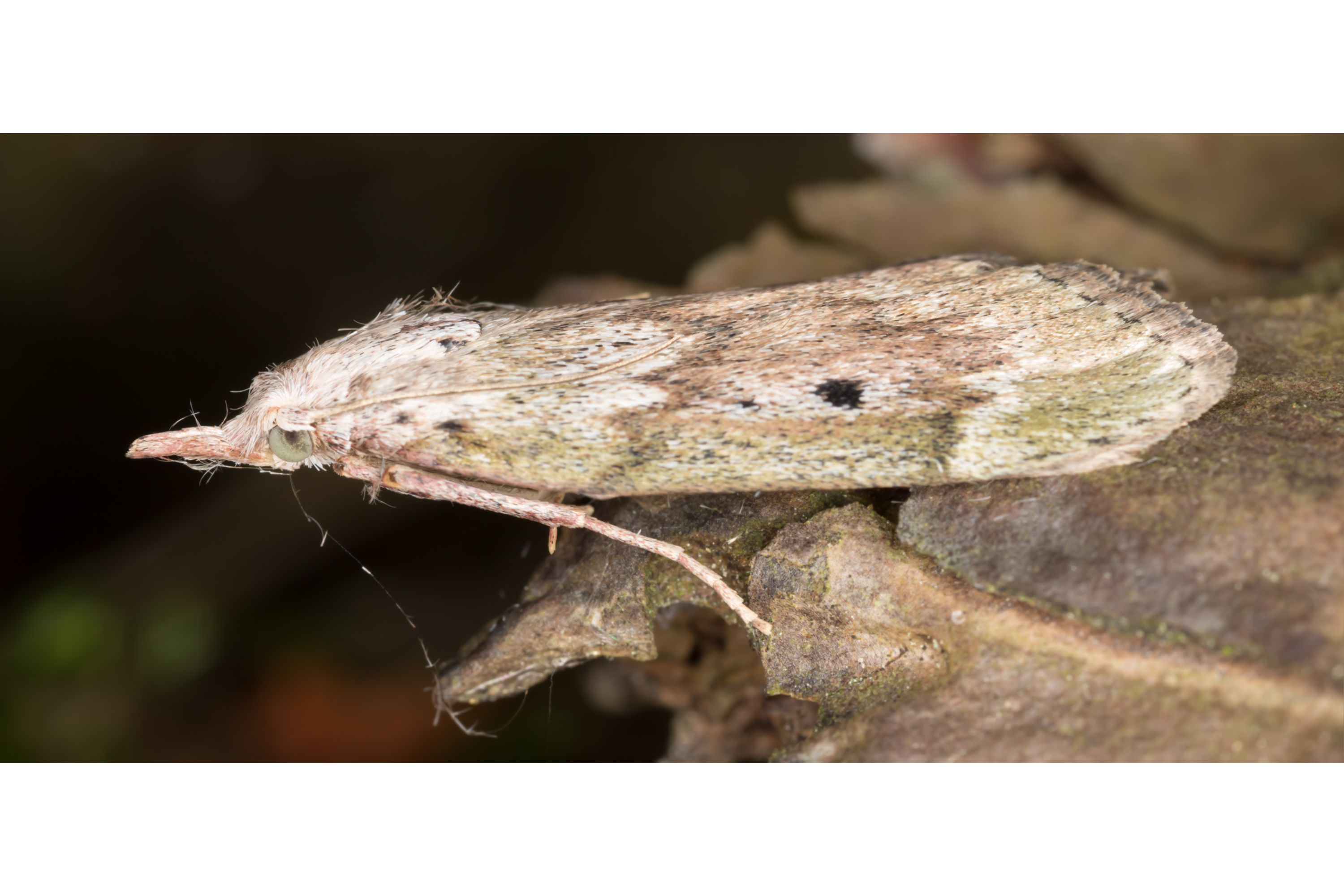Bee moth
(Aphomia sociella)

Description
Aphomia sociella, also known as the bee moth and the bumble bee wax moth, is a small moth of the family Pyralidae (snout moths) and subfamily Galleriinae. Its body and forewings are typically reddish brown, tan, or dark green in color and females have a dark spot in the center of each forewing. The bee moth is native to Europe and are named "bee moths" because they seek out nests of bees and wasps to lay their eggs. Aphomia sociella are considered a pest because the bee moth larvae severely damage commercial bee hives. Bee moths are also studied for their unique mating ritual which includes a release of pheromones from both the male and the female along with an ultrasonic signal emitted through the male's tymbals. The adult bee moth has a wingspan of 18-40 millimetres (0.71-1.57 inches). The body and forewings are typically reddish brown, tan, or dark green in color. This species is an example of sexual dimorphism where the male moths are generally more brightly colored and more distinctly patterned compared to the female moths. The females also contain a dark spot on the center of each of their forewings. The bee moth is commonly found in Europe, Britain, and Asia. In North America, the bee moth has been spotted in various states such as California, Utah, New York, Virginia, and Connecticut. This moth flies from June to August in the temperate parts of its range, e.g. Belgium and The Netherlands. The bee moth is a pest of bumblebees, wasps, and—on rare occasions—even mice. Females prefer to lay their eggs in more exposed and elevated nests of various species of Bombus and Vespine wasps. It is uncommon for a bee moth to seek out nests that are closer to the ground. Because this moth is able to hide its eggs in these foreign nests, it does not have to devote any energy to parental care. Bee moth larvae are known to feed on the host eggs, larvae, and pupae left unprotected by the bumble bees and wasps. Bee moth larvae will also feed on pollen, honey, and any waste that they find in the nest. Females are attracted to the odors of active bumble bee nests and a female will lay up to 100 eggs once it finds a nest that it prefers. The defenses of host colonies tend to increase during the summer; therefore, emergence from the eggs will typically occur in the early summer between March and July in order to take advantage of the temporary weakness of their hosts.
Taxonomic tree:







